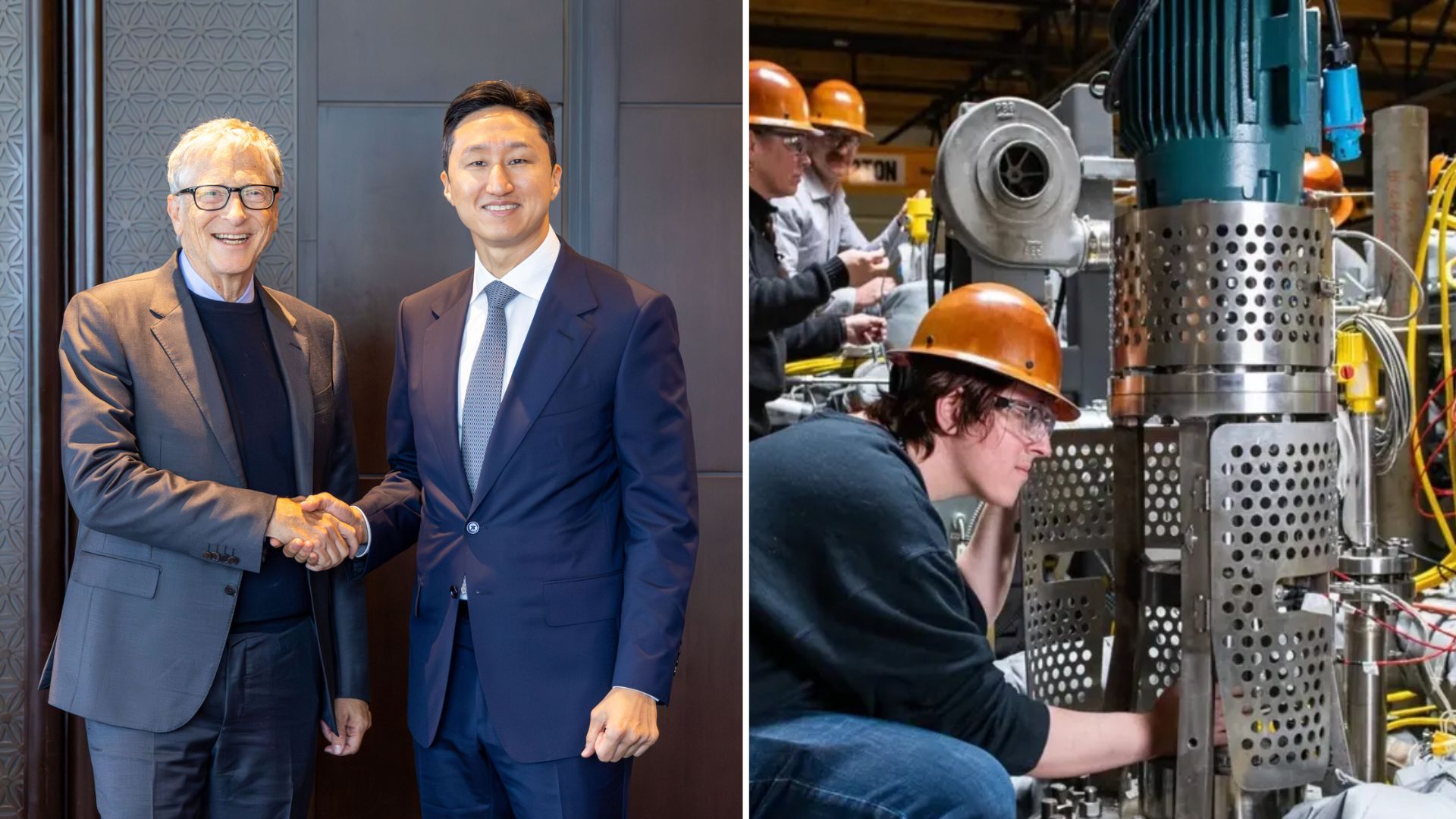
HD Hyundai, South Korea’s leading shipbuilding group, is deepening its ties with Bill Gates’ nuclear energy startup TerraPower. The company announced that its Executive Vice Chairman Chung Ki-sun met with Gates in Seoul to discuss cooperation on small modular reactor (SMR) projects.
The meeting took place at the Conrad Seoul in Yeouido. Chung, Gates, and TerraPower executives reviewed progress on TerraPower’s Natrium reactor, a fourth-generation design that uses a sodium-cooled fast reactor (SFR) system.
They also discussed expanding the reactor components supply chain to support commercialization efforts.
This discussion followed an agreement signed in March in the United States. At that time, HD Hyundai and TerraPower committed to building a manufacturing and supply network for Natrium reactors.
TerraPower’s reactor project in Wyoming
TerraPower plans to construct a 345-megawatt Natrium reactor in Kemmerer, Wyoming. Under a contract signed last December, HD Hyundai will manufacture and supply the reactor vessel, which holds the reactor core and coolant. The vessel is being developed at HD Hyundai’s dedicated SMR facility in Ulsan.
HD Hyundai had already shown confidence in TerraPower with a $30 million investment in November 2022. The funds were committed through HD Korea Shipbuilding & Offshore Engineering, an intermediate holding company in the group’s shipbuilding division.
Among SMR technologies, the sodium-cooled fast reactor is considered one of the most advanced. Instead of water, it uses liquid sodium to cool high-speed neutrons. Sodium has a boiling point of 883 degrees Celsius (1,621 degrees Fahrenheit), which makes it more suitable for high-temperature reactors.
This design brings several advantages, including high thermal efficiency, greater safety, and reduced nuclear waste. Compared to conventional reactors, waste could be cut by as much as 40 percent.
Growing market opportunities
HD Hyundai believes that small modular reactors will become a key part of the global energy mix. According to MarketsandMarkets, the worldwide SMR market was valued at $5.7 billion in 2022 and is projected to reach $6.8 billion by 2030.
The company has set ambitious goals to expand into marine nuclear energy. It aims to develop marine SMRs by 2030, investing 300 billion won ($215.4 million) in next-generation ship propulsion systems. These systems include both SMRs and hydrogen fuel cells.
HD Hyundai is also working with TerraPower on fast molten chloride reactors that could be used on ships. This collaboration is important as China accelerates projects for vessels powered by SMRs.
Chung highlighted the significance of this direction. “Next-generation SMR technology is a key solution for realizing sustainable energy,” he said. “Our collaboration with TerraPower will help build a global nuclear supply chain and accelerate the energy transition.”
Toward nuclear-powered ships and platforms
The Korean shipbuilder has already presented its vision for nuclear-powered shipping. It unveiled a design for a 15,000 twenty-foot equivalent unit containership powered by SMRs.
This model has received approval in principle from the American Bureau of Shipping (ABS). By the decade’s end, the company had also allocated about 300 billion won to advance nuclear-powered vessels.
HD Hyundai is exploring floating nuclear barge platforms as well. One design includes a 240 MW SMR-powered ship concept, while another involves a hydrogen production topside platform. Both have already secured ABS approval in principle.
Chung described the pact with TerraPower as a “turning point” in global nuclear supply chains. TerraPower CEO Chris Levesque agreed and said HD Hyundai’s manufacturing capabilities are critical to the rollout of the reactors.
Beyond shipbuilding, Gates also held talks with SK Group Chairman Chey Tae-won during his time in Seoul. That meeting focused on potential biotechnology, energy, and artificial intelligence cooperation.
0 comments:
Ikutan Komentar